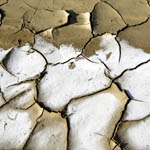Chapter 8 - Measuring Sustainability
Part 1 - Indicators of Sustainability
 Indicators are a practical approach towards measuring sustainability development. While there are challenges in designing, deploying, and interpreting indicators in some areas, for example monetary valuation of some natural attributes and resources, the use of indicators is a valuable way to measure sustainability. Selecting indicators that are truly effective in representing dynamic and complex systems is a continuing challenge. The quality and number of indicators, their usefulness in a policy and development context, and their effectiveness to communicate risk or need for change in a clear manner are practical challenges for implementing indicators to measure sustainability. Indicators are valuable decision support tools as human society moves forward to balance social, economic, and natural capital in an arena of increasing population and degradation of the environment.
Indicators are a practical approach towards measuring sustainability development. While there are challenges in designing, deploying, and interpreting indicators in some areas, for example monetary valuation of some natural attributes and resources, the use of indicators is a valuable way to measure sustainability. Selecting indicators that are truly effective in representing dynamic and complex systems is a continuing challenge. The quality and number of indicators, their usefulness in a policy and development context, and their effectiveness to communicate risk or need for change in a clear manner are practical challenges for implementing indicators to measure sustainability. Indicators are valuable decision support tools as human society moves forward to balance social, economic, and natural capital in an arena of increasing population and degradation of the environment.
There is agreement by the UN, the EC, the IMF, the OECD, the World Bank, and the US National Academies of Sciences that some categories of natural capital should be defined as critical and thus not be allowed to fall below a minimum level. These include, “a reasonably stable and predictable climate; air that is safe to breath; high quality water in sufficient quantities; and intact natural landscapes suitable for supporting a diversity of plant and animal life.” The concordance of agreement tells us that an objective, defensible, and practical system of indicators and measurement is a highly needed decision support tool, with regional, national, and international application.
Using indicators to inform, warn, and stimulate change in processes and behaviors have achieved prominence in the field of applied sustainable development. There are substantial discussions and developments on best approaches and best practices, the number and complexity of indicators, data availability, integration and weighting, as well as the best methods for implementing an indicated change response.
There is no doubt our competing values and the diversity of stakeholders can make change difficult, even in the face of indicators of great harm to the environment or to people. We can hope that more informed and adequately warned, we as a community can make good decisions and change the world, for the better, even if only in a small way.

Keywords
- indicator
- qualitative indicator
- quantitative indicator
- warning indicator
- state indicator
- temporal indicator
- indicator linkages
- indicator integration
- indicator indices
- indicator weighting
- multipliers
- direct effect
- indirect effect
- induced effect
- framework for indicators
- thresholds
Suggested Reading
- List of Sustainable Development Goal Targets and Indicators UN (2017)
- United Nations Division for Sustainable Development. UN Sustainable Development Goals Indicators Website
(Photo credit: UN Photo/Martine Perret)




